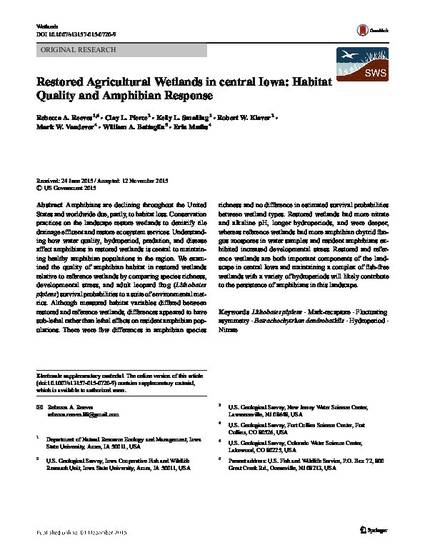
Amphibians are declining throughout the United States and worldwide due, partly, to habitat loss. Conservation practices on the landscape restore wetlands to denitrify tile drainage effluent and restore ecosystem services. Understanding how water quality, hydroperiod, predation, and disease affect amphibians in restored wetlands is central to maintaining healthy amphibian populations in the region. We examined the quality of amphibian habitat in restored wetlands relative to reference wetlands by comparing species richness, developmental stress, and adult leopard frog (Lithobates pipiens) survival probabilities to a suite of environmental metrics. Although measured habitat variables differed between restored and reference wetlands, differences appeared to have sub-lethal rather than lethal effects on resident amphibian populations. There were few differences in amphibian species richness and no difference in estimated survival probabilities between wetland types. Restored wetlands had more nitrate and alkaline pH, longer hydroperiods, and were deeper, whereas reference wetlands had more amphibian chytrid fungus zoospores in water samples and resident amphibians exhibited increased developmental stress. Restored and reference wetlands are both important components of the landscape in central Iowa and maintaining a complex of fish-free wetlands with a variety of hydroperiods will likely contribute to the persistence of amphibians in this landscape.
Available at: http://works.bepress.com/clay_pierce/48/

This article if from Wetlands (2015): 1, doi: 10.1007/s13157-015-0720-9. Posted with permission.